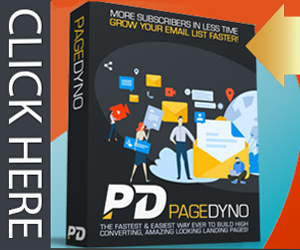Six Principles of Successful E-commerce

E-Commerce sales in the U.S. totaled $306 billion in 2014 and are projected to pass $494 billion by 2018. With numbers like this, it is safe to say that e-commerce is here to stay and is only becoming more powerful by the minute.
You might already run your own e-commerce store or are about to launch one from scratch; either way, there are six principles every e-commerce website should follow.
1- Clean Visuals
Visuals and the overall look of your website are one of the most important elements in building trust with potential customers and in increasing their engagement on your site. If a website looks like it’s stuck in the last century, chances are that people will bounce rather quickly.
So make sure to not only invest in professional images, videos, and audio of your products, services, and perhaps your team members, but also high-quality graphic elements like photos and buttons that create a consistent design language throughout the site.
Create an environment that is intuitive, clear and easy to navigate and use the power of clean visuals to guide customers effortlessly through your sales funnel.
2- A/B Testing
Once you have built your website and are beginning to upload your various content assets, you might begin to wonder if version A or version B of a certain image or slogan should go up on the site. The truth is, you will never know what works better until you actually expose it to viewers of your website, and that is where A/B testing comes in handy.
When implementing marketing campaigns to promote your products, you can create two similar pages of the same product and target one URL to group A of visitors and the other URL to group B. After a while, when you check the click-through statistics, you might notice that one of the pages turns more people into paying customers, so that is the page you should continue to use moving forward.
3- Facebook Integration
Facebook has become a very powerful marketing tool when it comes to running a successful e-commerce store. That’s because Facebook not only offers a great way to present products and services via their dedicated company pages, but also allows businesses to run some rather sophisticated advertising campaigns to reach outside their existing fan base.
With Facebook’s “Promoted Posts” you now can target your followers and their friends (which represent highly relevant consumers) as well as specify which gender, age range, location, and interest group you would like to tap into. Being able to select from existing interest groups is one of the biggest upsides of using Facebook ads, because chances are, for example, that someone who is interested in IKEA, will also be interested in other reasonably priced furniture.
Another great opportunity for e-commerce store owners would be to use Facebook Store apps, which allow you to publish your products and collections right on your Facebook company page.

4- Content Marketing
E-commerce in the age of the Internet comes with one great advantage: you can enhance your customer experience with additional content related directly to the products in your store. This can include how-to videos, podcast discussions, articles with customer stories and maybe even behind-the-scenes content about your company if you are comfortable with giving your customers an idea of “how the sausage is made.”
This type of content and transparency shows users that you truly care about their experience. Free advice and other related content will help you establish a proactive relationship with both new and existing customers as they now have a reason to return to your website in addition to looking for products.
5- Simplify Website Navigation and Checkout Options
In addition to using clean visuals and professional graphic design, it is important to design your website and store in a way that makes it as easy as possible for someone to purchase a product.
This includes reducing the number of sign-up windows and lengthy credit card forms as well as placing shopping cart icons in prominent areas so that customers can check out at any time.
This principle also applies to any external pages, like the one created with your Facebook e-commerce plugin. Let users pay right then and there, rather than re-routing them to other pages that might confuse or irritate them.
6- Customer Service
Providing how-to content is great, but offering top-notch customer service both before and after a sale is even better. If a potential customer has any doubts about the product, they should be able to contact you in a heartbeat, for example through online chats (with real people).
This will increase your chances of making a sale, as you are signaling to customers that you are knowledgeable about your products and services and that they won’t be left hanging after making a purchase.
Nick Rojas is a business consultant and writer who lives in Los Angeles and Chicago. He has consulted small and medium-sized enterprises for over twenty years. He has contributed articles to Visual.ly, Entrepreneur, and TechCrunch. You can follow him on Twitter @NickARojas, or you can reach him at NickAndrewRojas@gmail.com.
Comments are closed.



